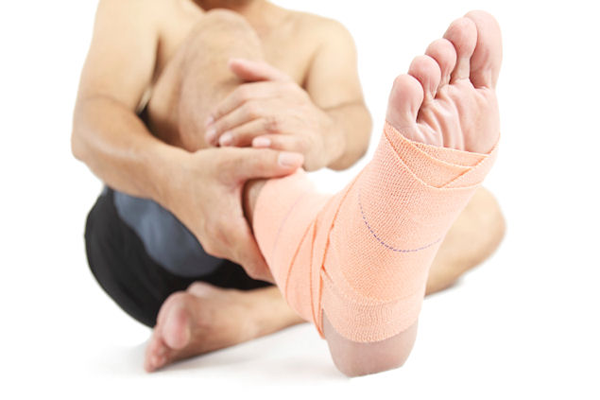To get in shape you have to be able to go to the gym most days of the week to train hard, burn calories and gain strength, right? Well that won’t be the case if you get hurt. When you’re working out you should always take precautionary measures to make sure your body is not in danger of things like pulling a muscle, overtraining, sprains and strains. In most cases injuries are totally avoidable, so make you’re using these 6 ways to avoid injuries during exercise.
1 – Know What Joints And Muscles Are Susceptible To Injury
If you don’t know what can happen, how in the world are you going to prevent it. Take some time to research what type of exercise you are doing.
Different activities have specific injuries that are more common. For example, one of the most common injuries in all sports are ankle sprains. Here are some other common set backs that happen in other activities:
- Football:neck, knee ligament tears, and pulled hamstrings
- Baseball & Tennis: Elbow and shoulder overuse injuries
- Sprinting & Running:Strained hamstring and plantar fasciitis
- Weightlifters:Back injuries and hernias
When you know what can happen during the activities that you do all the time, you can prioritize strengthening the muscles around those specific joints to stabilize them.

Lets move on, there are a few other preventative measures that we need to cover as well.
2 – Don’t Go Big Right Away
NEVER go into maximum effort lifts or bouts of cardio right away. That’s one of the silliest things you can do.
Let your muscles get acclimated to the movement pattern by repeating it over and over at lighter intensities first.
If you are just getting back into exercising from a long break, or you are a beginner all together, use the first week or two to get your muscles ready for more intense stuff.
No matter who you are, getting your muscles prepared before every workout is crucial. Warm-up first so your muscles are able to fire efficiently. Do a longer distance run at a more moderate pace before you start sprinting, and do more reps of lifts before doing maximal lifts.
This concept might seem completely logic, but believe it or not it’s one of the main causes for injuries and other setbacks.
Why is that? Well, it may seem really logical to start off slow right now. But when you’re pumped up and ready to go for a tough workout, it’s hard not to jump right into it full speed. You have to make a concentrated effort.

3 – Dynamic Stretching
Now that we’ve established the most common and probably the most obvious mistake that you can make, how do you fix it?
Dynamic stretching is the most efficient way to progress your body through a warm-up into increasingly more intense movements.
Instead of going straight to the bench press to crank out heavy reps check out some dynamic stretches on the SteadyStrength Youtube channel. Do exercises that involve muscle groups that you are about to use in your workout.
Studies have shown that this type of warming up makes muscles contract more forcefully and efficiently as well as less susceptible to injury. If you want to know How To Effectively Warm-up With Dynamic Stretching take a look at the article.

4 – Workout With A Friend
Who wants to workout alone anyways? Maybe you do, but on those days when you’re lifting a heavy weight it may not be the smartest thing to do.
It’s always a good idea to have a spotter. They serve a few purposes:
- Make sure you are using correct form (they can see angles that you can’t)
- Keep weights from falling on you when you fail
- Motivate you to push harder

5 – Listen To Your Body
Your body knows better than your workout plan most of the time. There are certain signals that you have to be aware of that tell you when you are at risk of getting hurt.
Being sore, or feeling a burn while you lift are both good pains that mean you are growing and improving.
Thinks like stabbing pains, throbbing, extreme fatigue, or excessive prolonged soreness are signs that your body is at the limit. They also might be signs of overtraining.
If you think you are at risk, then don’t do it. Taking a break is better than getting hurt and being set back for weeks or months.

6 – Recover With Clean Nutrition
Consider your nutrition as an extension of your workout. A big part of how you feel the day after you train depends on what you eat.
If you sweated a lot make sure you replenish your muscles with enough water. Find out 10 Reasons Why Water Is The Ultimate Health Booster. You also need to refill your glycogen stores with carbohydrates.
Studies show that vitamins can decrease the amount of muscular damage during resistance training. Eating fruits and vegetables provide the best vitamins you can get.

Give yourself the best chance to stay fit by being capable to go to the gym. These 6 ways to avoid injury during exercise will help you avoid huge setbacks toward your fitness goal. I hope you liked this article and found it informative. If so, please share it on facebook. You can easily ask me any questions that you might have by contacting me. I’ll get back to you ASAP.
 About Adam Pegg
About Adam Pegg



